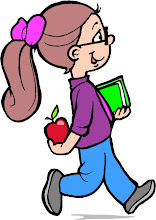This week was supposed to be a book study of And to Think that I Saw it on Mulberry Street. However, in six weeks our support group is having a science fair, and knowing how busy life can get, I thought we ought to get started right away. The theme of the fair is "Men of Science/Men of God". We are to learn about a scientist who was a Christian, and how their Christian belief helped them invent or discover what they are known for.
We have chosen Wilbur and Orville Wright. Our display will be divided in 3 sections. First, how God prepared them (their childhood). Second, the process they went through to fly. Third, how flight has impacted the spread of Christianity.
So far, we have read Let's Fly, Wilbur and Orville! by Peter and Connie Roop. Now we are reading They Gave Us Wings: The Wright Brothers by Charles Ludwig, from The Sowers series. We have also watched the video Wilbur & Orville: Dreams of Flying.
Our next "Book Study" week is right before the science fair, so that week we will put our display together.










